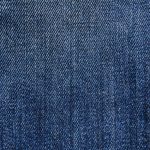When you consider waxed fabrics, you might appreciate their durability and water resistance, but have you thought about the environmental implications? The production process involves specific resources that can raise sustainability concerns, and regular maintenance can further complicate their ecological footprint. As you weigh the benefits against the potential drawbacks, you'll find that recycling these materials isn't as straightforward as it seems. What if there are more eco-friendly alternatives just waiting to be explored?
Table of Contents
Key Takeaways
- Waxed fabrics are durable and water-resistant, reducing the frequency of replacements and overall environmental impact.
- The production process involves sourcing wax materials, which can raise environmental concerns if not sustainably managed.
- Regular maintenance, including re-waxing, is essential to prolong the fabric's life and minimize waste.
- Recycling waxed fabrics is challenging due to mixed materials, necessitating careful disposal or upcycling practices.
Overview of Waxed Fabrics
Waxed fabrics are versatile materials that combine the durability of textiles with a water-resistant finish, making them ideal for various applications. You'll often find them used in outdoor gear, bags, and even clothing. Their unique properties stem from the process of applying a wax coating to natural or synthetic fabrics, enhancing their resistance to elements while retaining flexibility.
When you choose waxed fabrics, you're opting for a solution that withstands the rigors of everyday use. Whether you're hiking in the rain or commuting on a bike, these materials offer protection against moisture and wear. They also possess an aesthetic appeal, as the wax finish gives them a distinctive, rustic look that many people appreciate.
You might also notice that waxed fabrics can be easily cleaned and maintained. A simple wipe-down is often enough to keep them looking fresh, making them practical for various lifestyles. However, it's essential to be mindful of their care to ensure longevity.
Production Process and Resources
The production of waxed fabrics involves a careful combination of textile selection, wax application, and finishing processes that ensure both durability and functionality.
First, you need to choose the right base fabric, often cotton or canvas, known for its strength and ability to absorb wax. The quality of the fabric plays a crucial role in the final product's performance.
Next, you'll apply a wax mixture, usually a blend of natural waxes like paraffin, beeswax, or soy wax. This mixture is heated until it's liquid, then evenly coated onto the fabric using techniques like dipping, brushing, or rolling. Each method has its advantages, impacting the final texture and water resistance.
After application, the fabric undergoes a finishing process, which may include heat setting to ensure the wax bonds properly. This step enhances the fabric's durability and functionality, making it resistant to water and wear.
Throughout this process, it's essential to consider the resources used, from the sourcing of materials to the energy consumed in production. By focusing on sustainable practices, you can minimize the environmental impact of producing waxed fabrics.
Environmental Footprint of Use
Using waxed fabrics can significantly affect your environmental footprint, especially during their everyday use and maintenance. These materials offer durability and water resistance, which can reduce the need for frequent replacements. By choosing waxed fabrics, you're likely to consume fewer resources over time, minimizing your overall impact.
However, the maintenance of these fabrics is crucial. Regular re-waxing is necessary to maintain their protective qualities. This process often involves using paraffin or beeswax, raising concerns about the sourcing and environmental impact of these materials. If you're not careful, the chemicals in some waxes can leach into the environment, affecting soil and water quality.
When cleaning waxed fabrics, avoid harsh detergents that can degrade the material or contribute to water pollution. Instead, opt for gentle cleaning solutions and cold water. This mindful approach not only prolongs the life of your fabric but also lessens the environmental toll associated with cleaning.
Ultimately, the way you use and maintain waxed fabrics can either enhance or diminish their sustainability. By making conscious choices, you can enjoy the benefits of these durable materials while reducing your environmental footprint.
Disposal and Waste Management
Proper disposal and waste management of waxed fabrics are essential to minimizing their environmental impact. When you're ready to part ways with these materials, consider how to dispose of them responsibly.
Waxed fabrics often contain a mix of natural and synthetic fibers, making recycling a challenge. Check with your local recycling programs to see if they accept such items. If recycling isn't an option, it's crucial to avoid tossing them in regular trash.
Instead, look for specialized textile recycling facilities or upcycling opportunities. You can repurpose the fabric into new items, like bags or home décor, extending its lifecycle and reducing waste.
For those who can't reuse or recycle, ensure you're disposing of waxed fabrics in a way that minimizes harm. Some areas have specific disposal guidelines for textiles—follow those to prevent them from ending up in landfills where they can take years to decompose.
Sustainable Alternatives and Practices
Exploring sustainable alternatives for waxed fabrics can significantly reduce your environmental footprint while still meeting your fabric needs. By choosing eco-friendly options, you can enjoy functional and stylish materials without contributing to pollution and waste.
Consider these sustainable alternatives:
- Organic Cotton: Grown without harmful pesticides and chemicals, organic cotton is biodegradable and versatile for various applications.
- Hemp Fabric: This durable material requires less water and grows quickly, making it a fantastic eco-friendly choice for clothing and accessories.
- Recycled Polyester: Made from post-consumer plastic bottles, recycled polyester helps divert waste from landfills while providing excellent performance.
Frequently Asked Questions
Are Waxed Fabrics Biodegradable or Compostable?
Waxed fabrics aren't typically biodegradable or compostable due to their synthetic components and the wax coating. If you're looking for eco-friendly options, consider alternatives made from natural fibers without chemical treatments.
Can Waxed Fabrics Be Recycled?
You can't recycle waxed fabrics in standard recycling programs due to their coatings. However, some specialty facilities might accept them. Always check local guidelines or consider reusing them for creative projects instead.
How Do Waxed Fabrics Compare to Synthetic Materials Environmentally?
When comparing waxed fabrics to synthetic materials, you'll find that waxed fabrics often have a lower environmental footprint. They're biodegradable and use natural resources, while synthetics rely heavily on petroleum and contribute to microplastic pollution.
What Are Common Uses for Waxed Fabrics?
You'll find waxed fabrics used for various purposes, like durable jackets, bags, and outdoor gear. Their water-resistant properties make them ideal for camping, crafting, and even home décor, adding style and functionality to your projects.
Do Waxed Fabrics Require Special Cleaning Methods?
Yes, waxed fabrics do require special cleaning methods. You shouldn't machine wash them; instead, wipe with a damp cloth and mild soap. Reapplying wax periodically helps maintain their water-resistant properties and overall appearance.
- The Manufacturing Process of Nonwoven Polypropylene - July 11, 2025
- Is Suede Considered a Nonwoven Material? - July 11, 2025
- Is Silk a Nonwoven Fabric? - July 11, 2025





